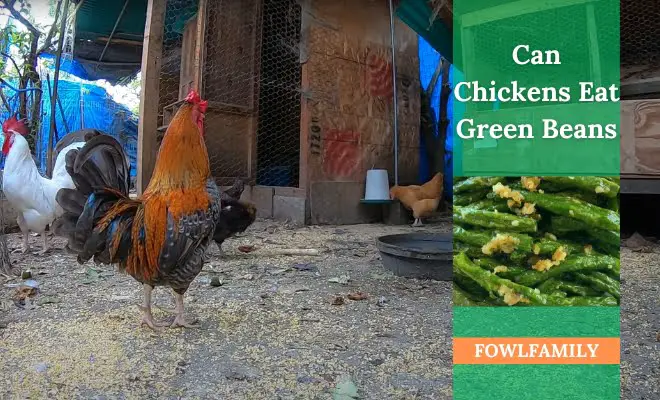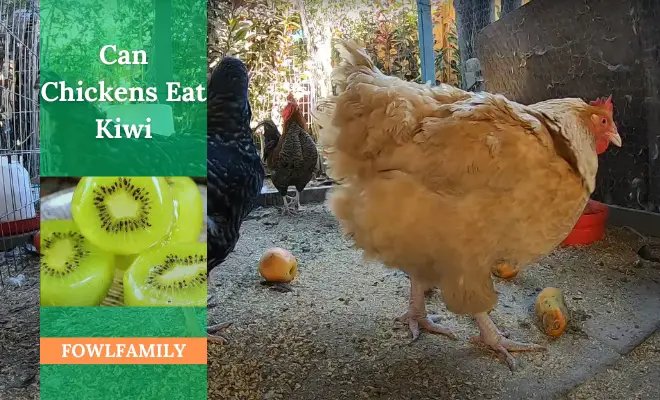
Raising chickens without a big yard might seem hard, but with planning, it’s easy. Even if you don’t have much space, you can still raise chickens.
But How to Raise Chickens with No Land? First, decide on the type of chickens you want. Big ones like Rhode Island Reds need 4 square feet in the coop and 10 in the yard. Smaller ones, called Bantams, need 2 square feet in the coop and 8 in the yard. Also, one box for every three hens is enough. Chickens also need a feeder and a clean space for dust baths.
Besides these things, chickens need some additional things to get raised properly. Here, I’ll guide you with all these things related to raising them with no land.
Table of Contents
How to Raise Chickens with No Land? A Guideline with 8 Steps!
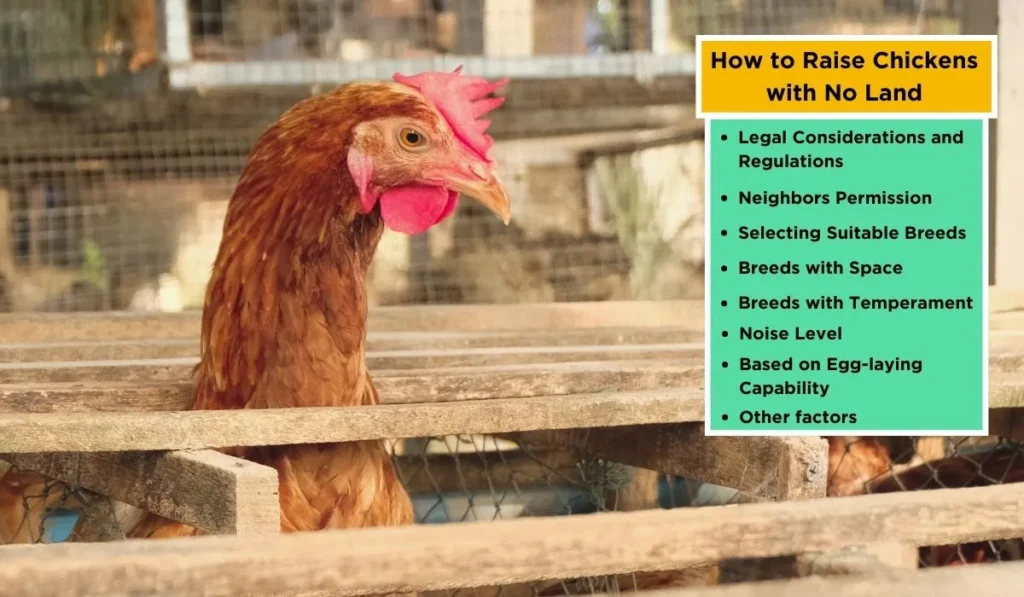
Raising chickens without land is a little difficult and I said it earlier. But if you have creative ideas with proper planning, it’s easy! I mean raising chickens becomes much more fun with no land. Here are my guidelines for you:
1. Legal Considerations and Regulations
If you want to raise chickens without land, there are rules to follow. In the UK, you can keep a few chickens, but if you have more than 50, you need to register with DEFRA.
Check with your local council for any laws against having chickens. Also, look at your property deeds to ensure there are no rules against it.
In Australia, you might need a permit from the council to have backyard chickens. If you have over 100 chickens, you need a special code from Local Land Services. When you sell eggs or meat, there are more rules on the Food Authority NSW website.
Make sure to check local laws and rules from your property association. Follow the rules, get permits if needed, and remember, you don’t need roosters for hens to lay eggs.
2. Neighbors Permission
When it comes to having chickens, you also need to think about your neighbors. If your area allows chickens, talk to your neighbors about it. Some things like roosters making noise early in the morning or bad smells can bother them.
It’s a good idea to talk openly with your neighbors and try to fix any problems before they become big issues. Being considerate and talking things out helps everyone get along better.
3. Selecting Suitable Breeds
When it comes to raising chickens without land, selecting the right breed is crucial. You need to choose a breed that is well-suited to your environment and your needs. Some breeds are better suited for small spaces than others.
Related Reads:
4. Breeds with Space
I already said that large birds such as Rhode Island Reds need 4 square feet of space/bird in their coop. Also, they need about 10 square feet of run or yard space.
While larger, some standard breeds adapt well to confined spaces. Look for docile and quiet breeds like Australorps, Plymouth Rocks, or Orpingtons.
When it’s the Bantams, they need 2 square feet of coop/bird and 8 square feet of run/yard.
Bantam versions of breeds offer all the charm and egg-laying capabilities. Consider Silkies, Wyandotte bantams, or Rhode Island Red bantams.
5. Breeds with Temperament
Opt for breeds known for their calm and friendly nature. This minimizes stress for both you and your chickens in close quarters. Silkies, Cochins, and Polish chickens are known for their gentle personalities.
6. Noise Level
Quiet roosters: If roosters are allowed, choose breeds with quieter crows, like the Black Australorp or Delaware. Consider pullets (all hens) if noise is a major concern.
7. Based on Egg-laying Capability
Some breeds lay prolifically in smaller spaces. Rhode Island Reds, Leghorns, and Australorps are good egg-laying choices. For an extra aesthetic touch, consider breeds known for colorful eggs.
Araucanas, Ameraucanas, and Cream Legbars lay blue or green eggs.
8. Other factors
Choose breeds suited to your local climate. Silkies with their fluffy feathers do well in cold weather. While Leghorns thrive in warmer climates.
Some breeds need more grooming than others. If space is limited, consider low-maintenance breeds like Cochins or Orpingtons.
Space-efficient Housing Options
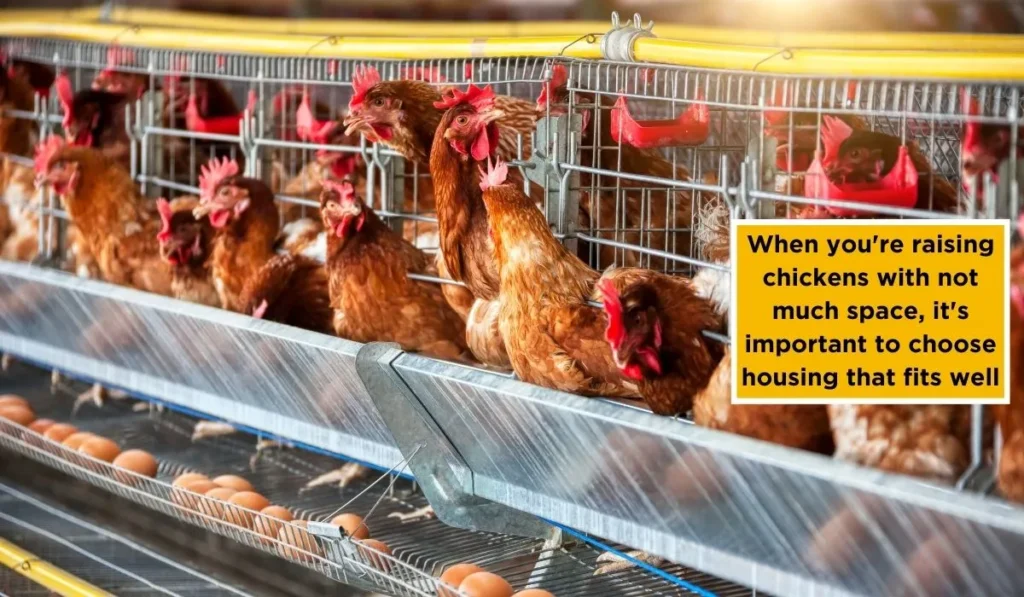
When you’re raising chickens with not much space, it’s important to choose housing that fits well. Here are some simple options:
- Vertical Coop: Make a two-story coop to save space. The bottom is a safe run area, and the top has nesting boxes and roosting spots. It keeps things organized and uses the space well.
- Mobile Coop: Try a coop on wheels! Move it around your yard to give your chickens new spots to explore. Just make sure it’s strong and safe from animals.
- Chicken Tractor: This combines a coop with a fenced run. Move it daily to let your chickens peck at fresh grass. It’s good for both you and your feathery friends!
- Upcycled Containers: Get creative! Turn old things like bathtubs or dressers into cozy chicken homes with a bit of fixing up.
- Wall-Mounted Coop: If you have little space, mount a coop on a sturdy wall or fence. It saves floor space and keeps your chickens safe. Just make sure it’s easy to clean and take care of.
Vertical Gardening for Feed
Vertical gardening is a clever way to feed chickens when you don’t have much land. It means growing plants up and down instead of spreading them out. Here’s how to make a vertical garden for your chickens:
- Hanging Planters: Hang pots with herbs and greens on walls or fences. Chickens can easily peck at the leaves. Herbs like parsley, basil, and cilantro taste good in chickens and are healthy for them.
- Vertical Towers: Get tall planters that let you grow different plants without using a lot of space. Chickens love leafy veggies like kale and lettuce, and these towers are perfect for that.
- Wall-Mounted Boxes: Put boxes on the wall with plants that chickens can eat. It’s like a little garden on the wall, giving your chickens a variety of fresh greens. Just make sure the plants are safe for them.
- Pallet Gardens: Use old pallets to make gardens that go up. Attach small pots to the pallet and plant things like clover or wheatgrass. It saves space, and your chickens can reach the plants easily.
- Trellis System: Make a system with trellises for climbing plants such as peas or beans. Chickens can nibble on the leaves and enjoy fresh veggies. Trellises are like frames that keep plants off the ground.
Related Read: How to Raise Chickens and Ducks Together
What Alternative Feeding Strategies You Can Try for Raising Chickens?
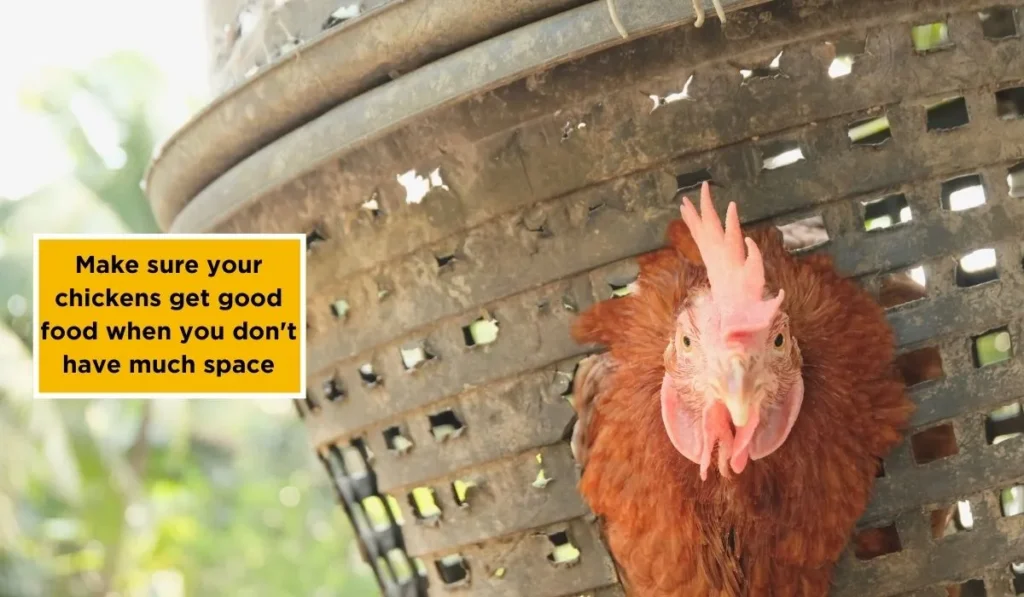
To make sure your chickens get good food when you don’t have much space, try these alternatives:
- Insect Farming: Set up a small insect farm for your chickens. Bugs like mealworms or crickets are yummy and full of protein.
- Sprouted Grains: Grow sprouts from grains like wheat or sunflower seeds. It’s an easy way to make your chickens’ food better, and you can do it inside in trays.
- Kitchen Scraps: Use leftover kitchen scraps for your chickens. Things like fruit peels or leftover grains are good for them. Composting these scraps is good for the environment, too.
- Microgreens: Grow tiny greens called microgreens inside or in small containers. They’re packed with good stuff for your chickens, like vitamins and minerals.
- Growing Hydroponic Fodder: Hydroponic fodder is simply young grass grown from cereals and grains. It is a great way to provide your chickens with fresh greens and other nutrients. You can grow hydroponic fodder indoors or outdoors as well.
- Commercial Chicken Feed: Buy special chicken food made for small spaces. It’s designed to give your chickens all the right nutrients. And it’s easy for small-scale chicken keeping.
- Herb Gardens: Plant herbs like mint, oregano, or thyme for your chickens. They can eat these herbs as herbs add flavor to their food while helping their health.
- Grit and Oyster Shells: Provide your chickens with access to grit (small stones) and oyster shells. Grit aids in digestion. While oyster shells provide essential calcium for strong bones and egg production.
- Seeds and Nuts: Give your chickens seeds and nuts sometimes. Sunflower seeds, pumpkin seeds, and unsalted nuts are tasty and healthy treats.
Waste Management – How to keep the area clean for chickens?
Keeping the chicken area clean is super important when you don’t have a lot of space. Here are some easy ways to manage waste for small-scale chicken keeping:
- Deep Litter Method: Put straw or wood shavings in the coop and add more. This mixes with chicken droppings to make compost. It keeps things comfy and smelling good.
- Composting: Make a compost area for chicken waste, bedding, and kitchen scraps. Stir it often to break things down quickly. When it’s ready, use it as plant food.
- Regular Cleaning: Clean the nearby areas on a daily basis. Take out wet or dirty bedding fast to stop harmful germs and bad smells. Also, keep water and food containers clean.
- Use of Dropping Boards: Put boards under where chickens sleep. These boards can be taken out and cleaned easily, stopping droppings from piling up on the floor.
- Rotation of Outdoor Space: If your chickens go outside, switch where they roam sometimes. This helps plants grow back, avoids too much waste in one spot, and keeps things balanced.
- Fly Management: Keep flies away using traps or natural things that bugs don’t like. Flies can bother chickens, so it’s good to control them for everyone’s comfort.
- Vermicomposting: Think about using worms to break down chicken waste. This process is compact and can be done indoors. The worms turn waste into food for plants.
See the video for some additional ideas about raising chicken with no land in hand. If the purpose is doing poultry business, the video is a gift for you!
How to Keep Chickens Health and Wellness in Limited Spaces?
To keep chickens happy and healthy in small spaces, pay extra attention to these areas:
- Clean Yard and Run: Clean the yard weekly, removing droppings and old bedding. Keep good ventilation to maintain fresh air and prevent overcrowding. Provide absorbent bedding and a dust bath area with sand or ash.
- Nutrition and Exercise: Feed them a mix of commercial feed, kitchen scraps, and treats. Ensure they have constant access to clean water. Use hanging feeders and toys to encourage foraging and exercise.
- Predator Protection: Secure the coop and run with strong wire mesh fencing. Monitor chickens and use deterrents if needed.
- Disease Prevention: Check with a vet for recommended vaccinations. Quarantine new chickens for two weeks. Watch for signs of illness and seek vet advice when needed.
- Socialization and Interaction: Spend time with your chickens daily. Keep at least two chickens together for companionship.
Recommended Readings:
- Simplest Way To Build Chicken Playground
- Why You Should Build a Chicken Swing
- How To Create A Dust Bath For Your Chickens
FAQs
Here are some related queries about raising chicken with no land.
Q. Should you keep laying hens in no land?
Yes, you can keep laying hens in no land. Using space-efficient methods like vertical coops or portable options is ideal.
Q. Can I raise a chicken in an apartment?
Yes, it’s possible but there’s a limitation. It’s possible with bantam breeds, balcony enclosures, and adherence to local regulations.
Q. How much space do 5 chickens need?
Minimum of 20 square feet in a coop and 100 square feet in a run. It’s for optimal comfort and health.
Q. How to build a cheap chicken coop?
Use recycled materials, and repurpose existing structures. Plus, prioritize simplicity in design to build a cost-effective chicken coop.
Summarization
So, how to raise chickens with no land? Successfully raising chickens with no land involves creativity and careful planning. Vertical coops, mobile setups, and efficient use of small spaces offer practical solutions. Prioritizing cleanliness, providing proper nutrition, and abiding by local regulations are crucial as well.
With thoughtful strategies, even in limited spaces, one can raise chickens to fulfill their purpose. Follow the guidelines I included and good luck with a successful farming.





